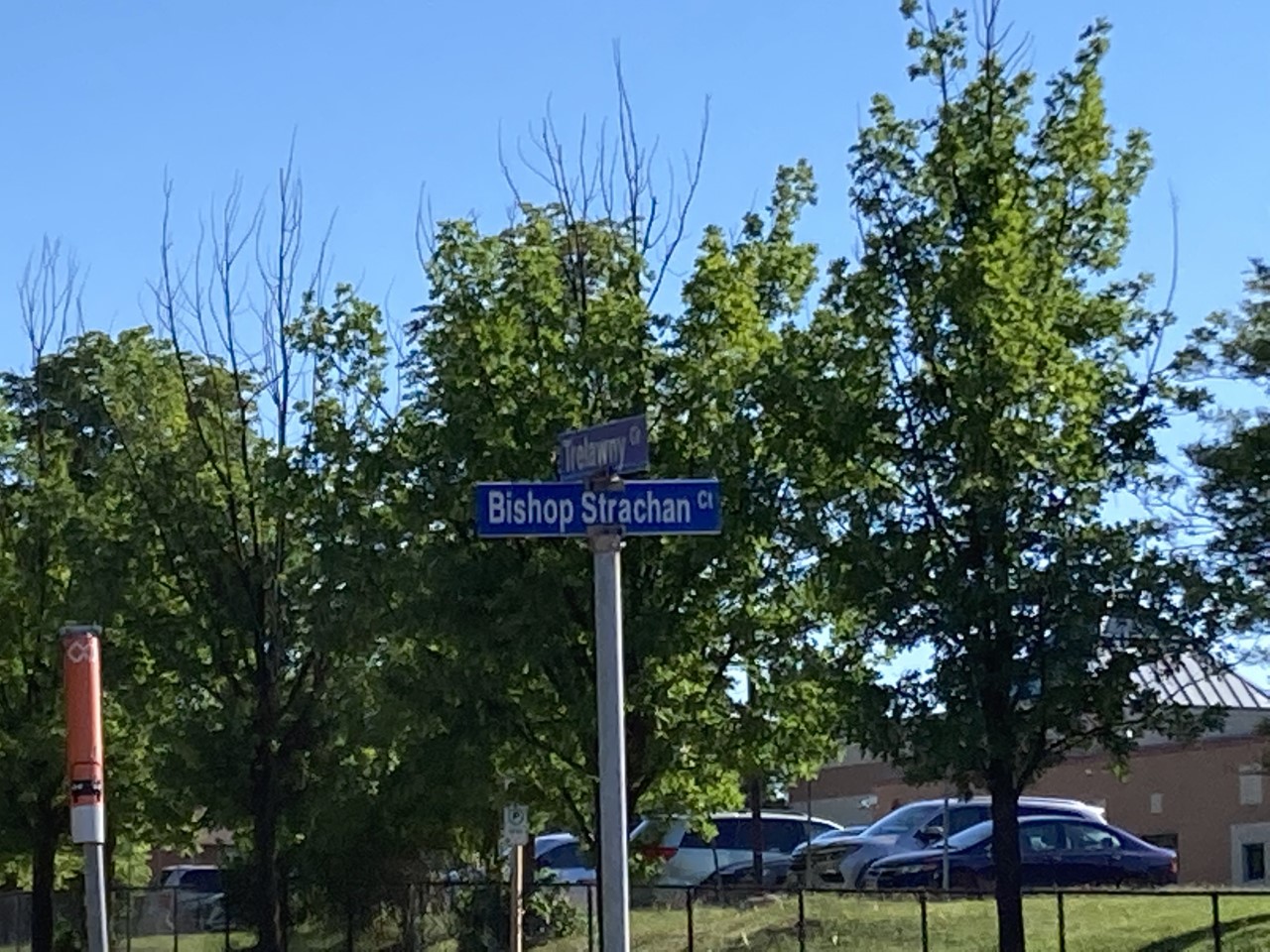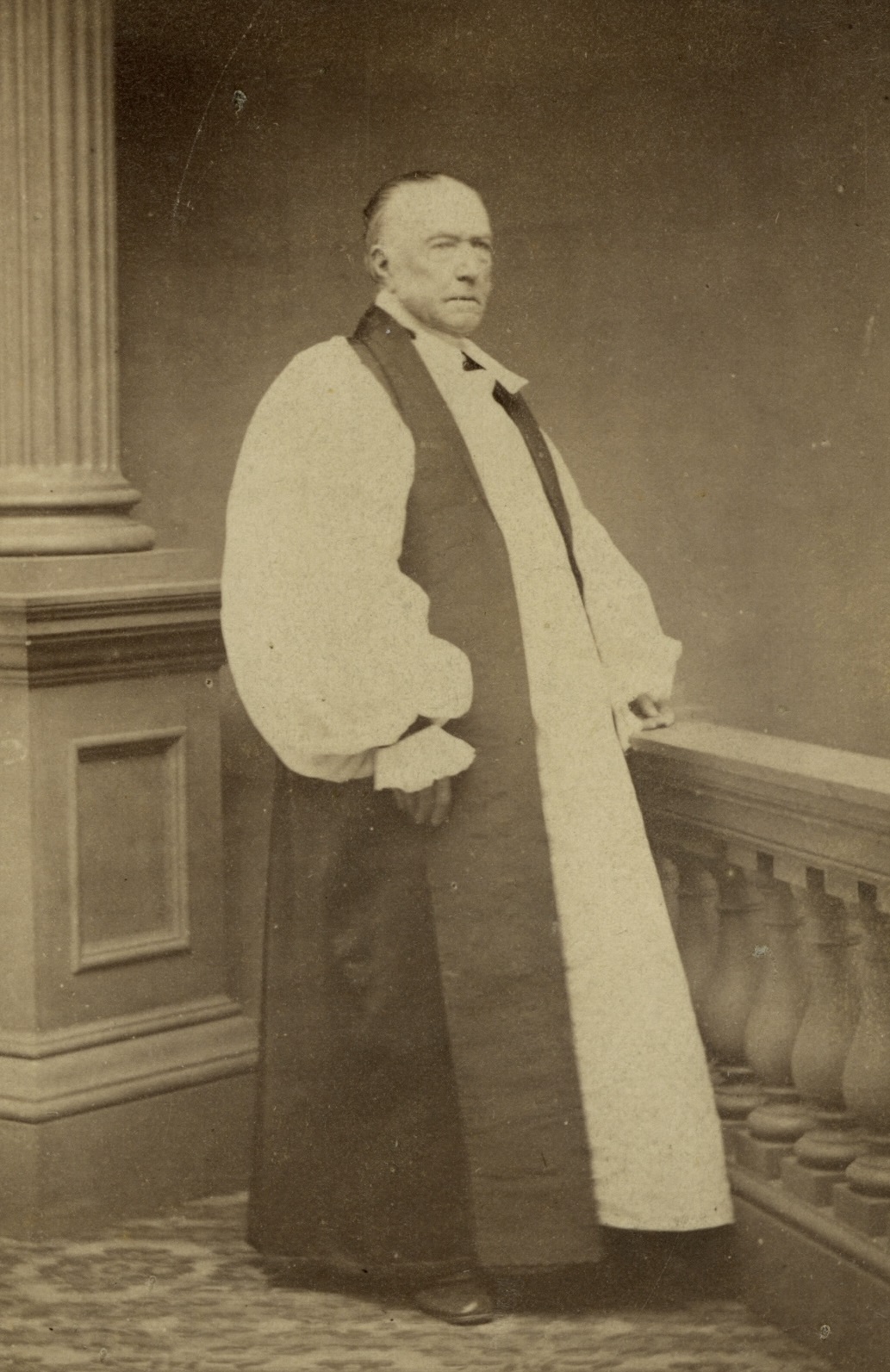This article might pose more questions than answers.
There is a street (or a court to be precise) in northwest Mississauga named for Bishop John Strachan (pronounced “Strawn”). Bishop Strachan Court was developed in the early 1990s as part of the Trelawny subdivision development in Meadowvale, which in itself is a unique part of Mississauga’s suburban development.

As for Bishop Strachan Court, the “who” is simple, but the question of “why” begs for answers – why this name, why here, and why did it come to the fore of street naming in Mississauga in 1990s – all of which remain a bit of an unknown. After all there are long-established schools, universities, churches and a noted road in Toronto that all connect back to this influential figure in early Upper Canada (Ontario).
Bishop John Strachan (1778-1867) was born in Aberdeen, Scotland, and came to Canada in 1799. After first teaching in Kingston, he was ordained in the Anglican church in 1803. He had combined roles as both a clergyman and a politician, serving as a rector in York (Toronto) while also serving as a member of the Executive Council and the Legislative Council of Upper Canada. In 1825 he became the Archdeacon of the Anglican Church (Church of England) in York, and in 1827 he led the organization of King’s College (University of Toronto).

It has been written that Bishop Strachan was born to lead. In 1892, John Langtry (Rector of St. Luke’s Anglican Church in Toronto and founder of the Bishop Strachan School) wrote that Bishop Strachan was “clear-headed, resolute, unhesitating, energetic, high-tempered, he took the lead without any arrogant assumption in every company where he came.”
As written by John Moir in Canada: Portraits of Faith, (edited by Michael D. Clarke, 1998):
Few individuals influenced Canada’s early development more than John Strachan. He was the first Anglican bishop of Toronto and the founder of Ontario’s school system and of three of its universities—McGill, Toronto, and Trinity College. Strachan’s activities from the first day of the nine-teeth century until his death at his age eighty-nine in 1867 were centered in Ontario. His impact as an educator, a legislator, and a religious leader, however, extended to eastern Canada and later helped to shape the western provinces. His long, active, and multifaceted sixty-seven years in Canada earned him admirers and enemies, even after his passing.
Critically Bishop Strachan was a staunch conservative and worked to maintain the privileged position of the Anglican Church – often at the expense of other religions seeking to establish themselves. He was also a firm supporter of the Clergy Reserve system and of the socially and politically privileged elite of the Family Compact in Upper Canada – matters which played a central role in the Rebellion of 1837.
Moir goes on to reference that: Any brief evaluation of John Strachan and his place in Canadian history is complicated by his wide-ranging interests and enigmatic character. Throughout his life, he was consistently fearless: facing invading Americans and cholera epidemics. Although supposedly an arch-conservative, he introduced student government at his Cornwall school and recommended a five-and-a-half-day workweek so that a labourer’s life could contain more than physical toil … A father of universities, the first architect of Ontario’s education system, the first bishop and primary formative influence in the Anglican diocese of Toronto, John Strachan was, above all, a remarkable Canadian and a faithful Anglican.
Locally, there are a few connections between Bishop Strachan and historic Mississauga, including the appointment of Reverend James Magrath to the fledgling parish of St. Peter’s Anglican Church in Erindale in 1826, and his personal patronage of John Beverley Robinson, builder of The Grange (today the home of Heritage Mississauga). Those, perhaps, are stories to explore in future articles.
Of course, while all of this is fascinating exploration of our wider history, it does make you wonder about inspiration for a street naming here in Mississauga in the 1990s.
For more on the life and times of Bishop John Strachan, please see:
http://toranglican.atspace.com/
&
http://anglicanhistory.org/canada/langtry_history1892/05.html
&
http://www.biographi.ca/en/bio/strachan_john_9E.html



Comments are closed.